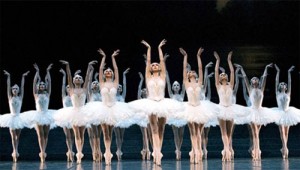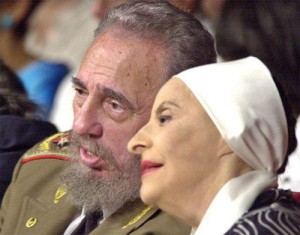Alicia Alonso and the Cuban Ballet Revolution
March 1, 2012 by emburke
The U.S. imposed embargo on Cuba has lead to substantial American insulation from Cuban culture, and in many ways created a significant gap in the American understanding of the conditions of the Cuban revolution and regime. While my knowledge of Cuba has resembled this typical American perspective in most realms, for me there has been one major exception to the mystery of Cuba. As a classically trained ballet dancer, Cuba has been of interest to me for many years as the home of Ballet Nacional de Cuba, one of the most prestigious ballet companies in the world, which under the direction of Alicia Alonso has produced world-class ballet stars for the past sixty years. However, while I have long been conscious of the existence of Ballet Nacional de Cuba, it is only over the course of the past two months that I have been able to place the ballet within a Cuban context. I have been able to identify its value not only as a part of the Cuban art culture, but also as a politicized institution that, like most Cuban institutions has experienced and reflected the push and pull, first of revolutionary change, and more recently of the beginnings of a new, more open Cuba.
Founded by international ballet star Alicia Alonso, Ballet Nacional de Cuba began as a distinctly political venture. Following the 1952 coup in which General Fulgencio Batista seized power and demanded that Alicia’s ballet company earn its subsidy by becoming part of the government, which Alicia staunchly refused to do, the company refused to continue performing on Cuban stages (Chavez). However, when the success of the revolution brought Fidel to power, Alicia and Ballet Nacional de Cuba, now receiving generous funding through the revolution, quickly fell into line with Fidel, with Alicia making public shows of revolutionary zeal that included performances of ballets choreographed around political themes with storylines featuring El Commandante and the entire company’s participation in the national harvest of sugar and coffee (Chavez). Additionally, Alicia pushed to remove the “elitist” audience of ballet and make performances accessible to all social classes of Cuba. This was a distinctly revolutionary initiative that had rarely been seen in the ballet world ever before, and even today remains practically unheard of.
However, during the development of Ballet Nacional de Cuba as a politicized Cuban institution, an interesting leadership dynamic began to form around Alicia. Just as the Cuban revolution depended on the leadership of Fidel, Alicia’s leadership of Ballet Nacional de Cuba began to take on a similarly centralized characteristic. Over the course of sixty years, Ballet Nacional de Cuba has never parted from the path of its visionary leader. However, the path chosen by Alicia has not always been popular. While the commitment to a distinctly Cuban form of ballet training has resulted in the production of some of the world’s best dancers, Alicia’s tight-fisted control over the company’s repertoire, touring schedules, and casting has occasionally lead to dissent and unrest within the company. Just as the Cuban people grew restless and weary of constraints on personal liberties, these sentiments were likewise reflected within Ballet Nacional de Cuba. Several dancers defected while on international tours, later citing Alicia’s rigid power hold over the company as a primary reason for their decisions.
Thus, we can identify parallels between the political state of the Cuban nation, and the state of Cuban ballet. Both lead by visionary individuals, both based on explicit principles of which neither leader was willing to compromise on. Additionally, just as Cuba has experienced both internal and external pressure, to open markets and look to a new vision for the future, Ballet Nacional de Cuba has had a similar experience. While Alicia Alonso continues to act as artistic director at the age of ninety-one, new rising stars in the company have begun to push for more variety of dance within the company’s repertoire, a change that would absolutely require a certain amount of “opening” to the world. It seems, just as Raul Castro now faces the challenge of negotiating the old and the new, Alicia Alonso too must face the decision to allow Ballet Nacional de Cuba to open to the world or face the possibility of becoming irrelevant in a world that may not stop to wait for Cuba or Alicia.
Leave a Reply
You must be logged in to post a comment.

